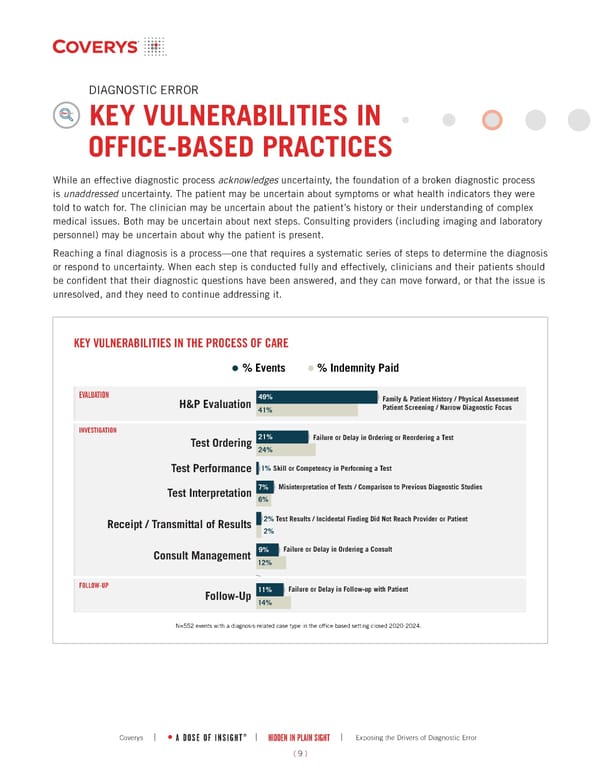While an effective diagnostic process acknowledges uncertainty, the foundation of a broken diagnostic process is unaddressed uncertainty. The patient may be uncertain about symptoms or what health indicators they were told to watch for. The clinician may be uncertain about the patient’s history or their understanding of complex medical issues. Both may be uncertain about next steps. Consulting providers (including imaging and laboratory personnel) may be uncertain about why the patient is present. Reaching a final diagnosis is a process—one that requires a systematic series of steps to determine the diagnosis or respond to uncertainty. When each step is conducted fully and effectively, clinicians and their patients should be confident that their diagnostic questions have been answered, and they can move forward, or that the issue is unresolved, and they need to continue addressing it. ( 9 ) DIAGNOSTIC ERROR KEY VULNERABILITIES IN OFFICE-BASED PRACTICES | HIDDEN IN PLAIN SIGHT | Exposing the Drivers of Diagnostic Error A DOSE OF INSIGHT ® Coverys | N=552 events with a diagnosis-related case type in the office-based setting closed 2020-2024. % Events % Indemnity Paid 49% 41% 21% 24% 7% 6% 2% 2% 9% 12% 11% 14% H&P Evaluation Test Interpretation Test Ordering Consult Management Follow-Up Receipt / Transmittal of Results Test Performance Family & Patient History / Physical Assessment Patient Screening / Narrow Diagnostic Focus Misinterpretation of Tests / Comparison to Previous Diagnostic Studies Test Results / Incidental Finding Did Not Reach Provider or Patient Failure or Delay in Ordering a Consult Failure or Delay in Follow-up with Patient Failure or Delay in Ordering or Reordering a Test Skill or Competency in Performing a Test 1% EVALUATION INVESTIGATION FOLLOW-UP KEY VULNERABILITIES IN THE PROCESS OF CARE N=552 events with a diagnosis-related case type in the office-based setting closed 2020-2024.
 White Paper - Drivers of Diagnostic Error: Office-Based Practice | Coverys Page 9 Page 11
White Paper - Drivers of Diagnostic Error: Office-Based Practice | Coverys Page 9 Page 11